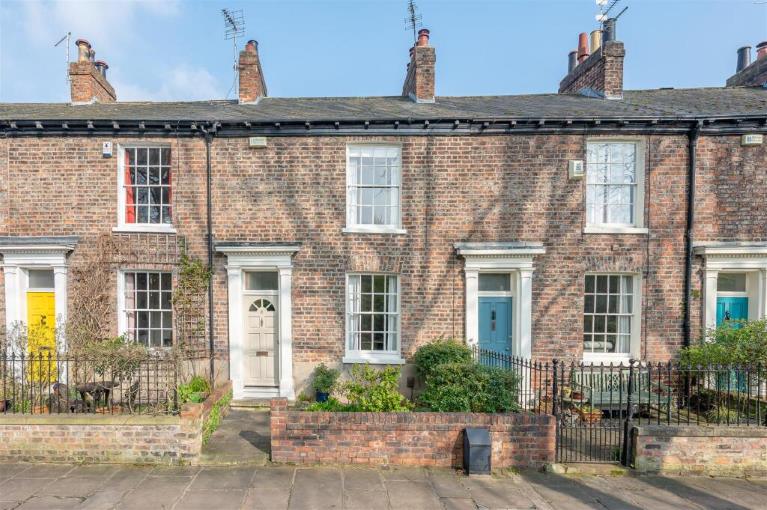What does today’s interest rate hold mean for mortgages?
The Bank of England (BoE) has announced it will hold the Base Rate at 4.5% this month. This comes after a 0.25% cut to the Base Rate at the previous meeting in February, which was the third 0.25% cut we’d seen since August 2024.
The Bank’s focus is to strike the right balance between keeping inflation close to its target of 2%, and keeping the wider economy healthy.
Last month it was announced that inflation had climbed to 3%, up from 2.5% the month previously. This is far from the highs we saw inflation reach back in 2022, when it was in excess of 10%. But this figure will no doubt be contributing to the Bank’s cautious approach – along with other global economic factors – around when to lower the Base Rate, and by how much.
Even though we’ve received news of a hold today – which was widely predicted – the markets expect more cuts to come throughout 2025, which could take the Base Rate down to around 3.75%.
What’s happened to mortgage rates recently?
We’ve seen mortgage rates hold relatively steady in the last few weeks. Our experts predict we could see mortgage rates continue to edge down through 2025, with average 2 and 5-year fixed rates falling to around 4% by the end of the year. Take a look at our predictions for the 2025 housing market in more detail here.
After a period of 2-year fixed rate deals being the more expensive option by a considerable margin – around 0.5% higher on average back in 2023 – we’re now seeing this gap close. And we might expect to see 2-year mortgage deals have lower average interest rates than 5-year deals in the near future.
The average 5-year fixed rate is down from 6.08% in July 2023, to 4.73% this week, and the average 2-year fixed rate is down from 6.61%, to 4.89%. You can check the current average mortgage rates for different terms and deposit sizes here, which we update throughout the week.
What do the experts think?
Our mortgage expert, Matt Smith, says: “Now that this expected interest rate hold is out of the way, all eyes are on May’s decision where the current forecast is a second cut of the year. Since the last decision in February, average mortgage rates have trickled downwards slightly but pretty much stayed flat. We’re seeing lenders try to price competitively where they can to capture business during some of the busiest months of the year for home-moving. However, there currently isn’t much wiggle room for lenders to offer cheaper rates, and hopefully a second cut can spur forward another wave of falling rates, and bring average rates closer to 4% rather than 5%.”
He adds: “We’re now seeing the lowest available mortgage rate as a 2-year product, rather than a 5-year product. Whilst it’s only available for those with the largest deposits, the big picture is that the short-term outlook for mortgage rates is improving, and it’s likely to become increasingly popular that people choose shorter-term deals.”
What does the Base Rate hold mean for my current mortgage?
Changes to the Bank’s Base Rate can impact how much interest you’ll pay on loans, including mortgages. If you’re on a fixed-rate deal, your monthly payments won’t change until the end of your deal. And if you’re on a variable or tracker mortgage, this month’s Base Rate hold will mean your monthly payments remain the same.
If you’re coming to the end of your fixed-rate mortgage soon, you’ve probably already started to think about the rate you’ll be offered on your next deal. Our remortgage calculator will show you new estimated monthly repayments from your current lender, and the 10 largest UK lenders. You can also check the current average remortgage rates here.
A good way to find out how much you could borrow is to use a mortgage calculator. And to get a personalised result by applying for a Mortgage in Principle which will take you one step closer to a mortgage offer.
In July 2023, the Mortgage Charter was launched to help those struggling to meet their monthly payments, as well as borrowers who are coming to an end of their fixed rates soon.
The Mortgage Charter encourages lenders to be flexible and offer borrowers the chance to lock in a new deal up to six months before their current rate ends. Of course, borrowers can also look at moving to another lender – commonly known as remortgaging – but this can take longer, as you have to go through a normal lending process, such as income checks, the legal process, and maybe a valuation of your home.
This all takes time, and you would want to make sure you’re looking around a few months before the end of your current deal to avoid falling onto your lender’s Standard Variable Rate – which will cost more than the repayments you’d have made on a fixed rate mortgage. The current average for SVRs is 7.51%.
When could interest rates fall?
The Bank of England’s Monetary Policy Committee meets every six weeks to discuss and vote on whether interest rates should go up or down, or stay the same.
History has shown that after interest rates have increased over time, they have remained flat before starting to come down gradually.
The Bank of England will be conscious not to make additional cuts too early, undoing the measures that brought inflation down, close to its 2% target. Though as always, this could change depending on what happens in the broader economic environment.
The next decision on interest rates will be announced at 12pm on 8 May 2025.
The header image for this article was provided courtesy of Hudson Moody, Micklegate
READ MORE: Our 2025 house price forecast
Please note: Your home may be repossessed if you do not keep up repayments on the mortgage. Rightmove is not authorised to give financial advice; the information and opinions provided in these articles are not intended to be financial advice and should not be relied upon when making financial decisions. Please seek advice from a regulated mortgage adviser.



